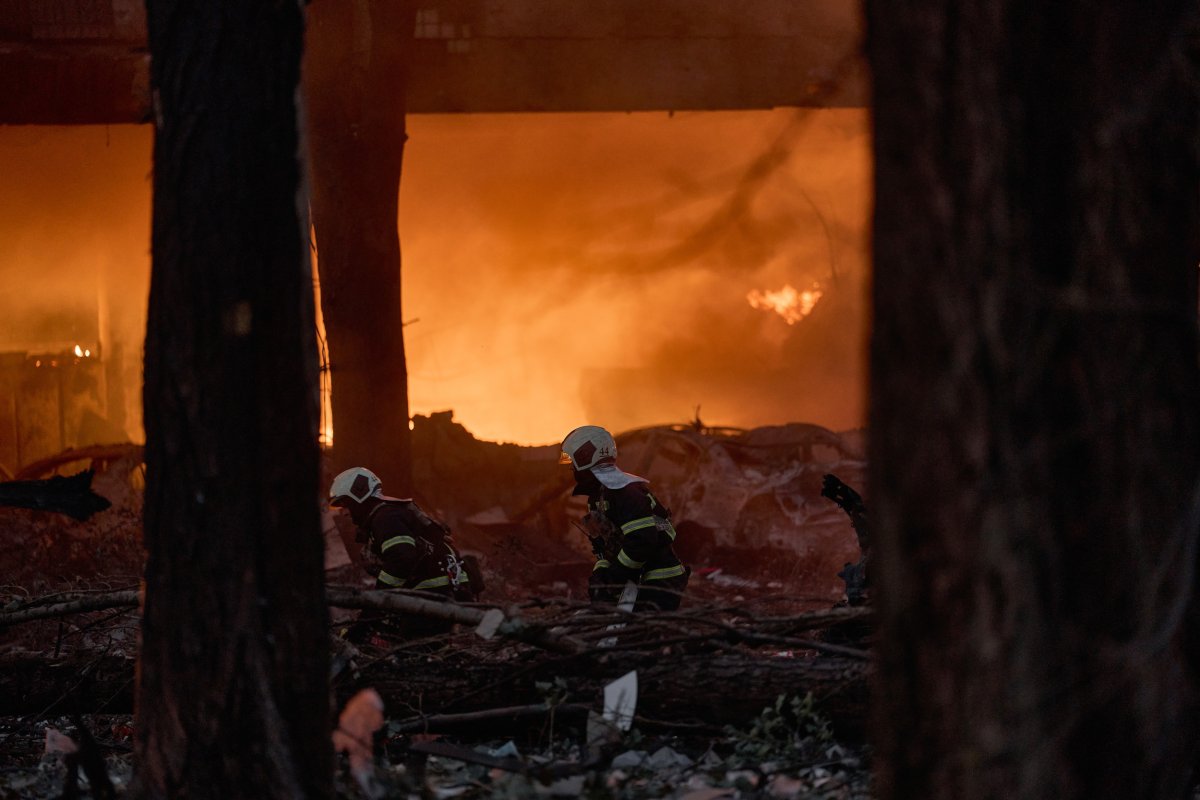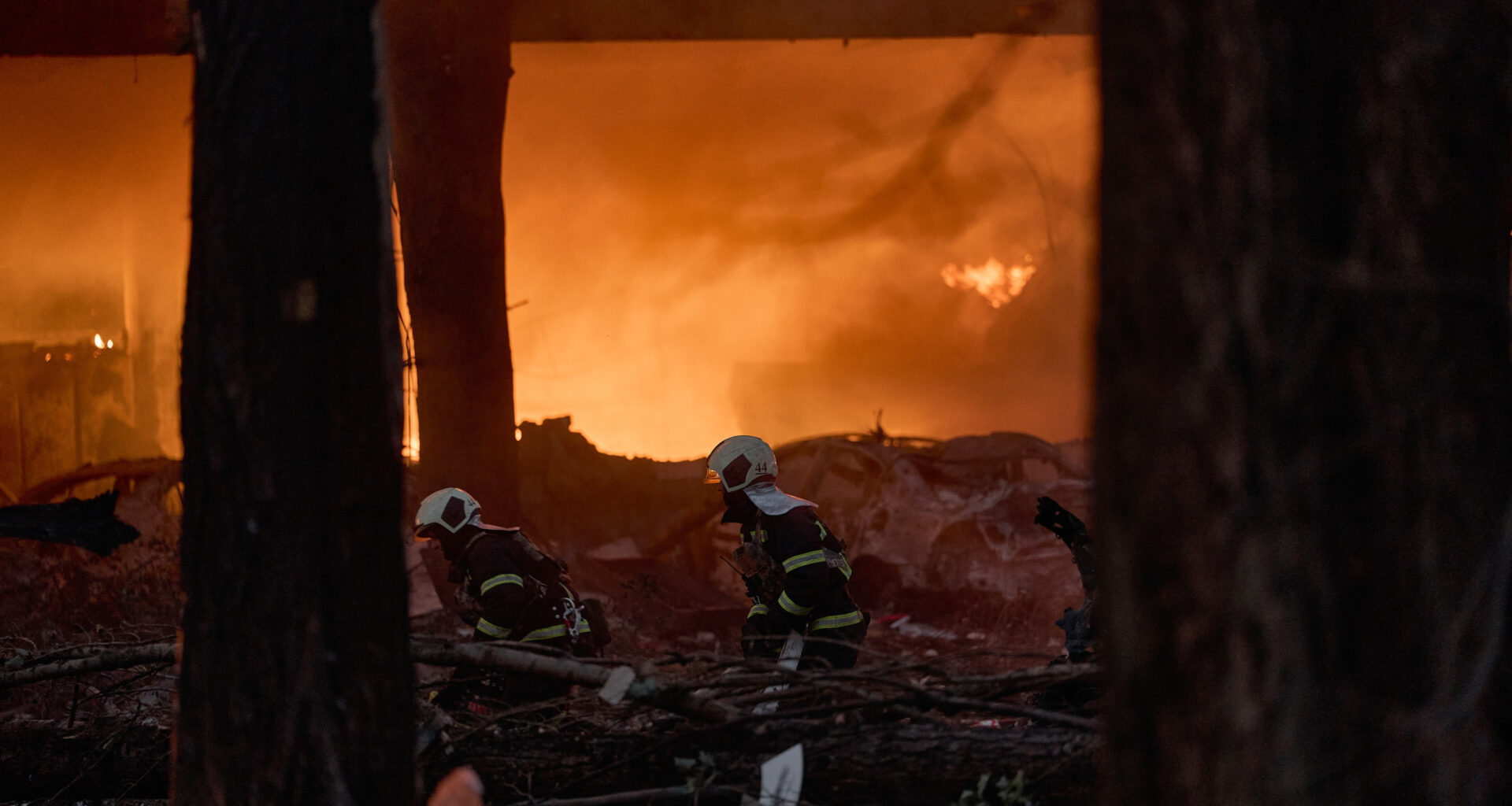Russia’s drone production has expanded so much that within months, it might be able to launch up to 2,000 of the devices in a single night, according to a report.
Moscow fired another barrage of drones and missiles on Ukrainian cities overnight Sunday. Ukraine’s Air Force said Moscow launched 450 drones and missiles targeting Kyiv and the cities of Ivano-Frankivsk and Kharkiv.
But Ukrainian and German officials have raised the alarm that Russia’s production of Shahed-type drones had grown to such an extent that strike packages four times bigger could be possible by November.
Newsweek has contacted the Russian defense ministry for comment.

Ukraine’s emergency services tackle a fire after a mass Russian drone and missile attack on Kyiv July 4, 2025 in Kyiv, Ukraine.
Ukraine’s emergency services tackle a fire after a mass Russian drone and missile attack on Kyiv July 4, 2025 in Kyiv, Ukraine.
Kostiantyn Liberov/Getty Images
Why It Matters
Moscow continues to step up its drone bombardment of Ukrainian cities as Russian President Vladimir Putin ignores calls for a ceasefire.
Moscow’s forces initially relied on Iranian-made Shahed or “kamikaze” drones to wreak havoc in strikes on Ukrainian infrastructure but is now using the technology to produce its own devices in its own factories across Russia.
Reports by German and Ukrainian officials about this increasing capacity will raise alarm about Moscow’s intentions come winter when it could use the colder months to target the Ukrainian population.
What To Know
Russia has been stepping up its Shahed-type strike drones and decoy drones in overnight strikes with the largest attack so far including 728 drones taking place on July 8.
But Moscow is boosting drone production capacity with the aim of launching 2,000 drones in one overnight strike package by November.
That is according to the head of the German Ministry of Defense’s Planning and Command Staff, Major General Christian Freuding, reported by Ukrainian outlet Suspilne citing comments he made to the a German military podcast.
In reporting the comments, the Institute for the Study of War said current growth in Russia’s drone production and usage makes this number achievable in that time frame although such a strike package would not be sustainable every night.
This is a double the estimate to one made July 4 by commander of the Ukrainian Unmanned Systems Forces Major Robert Brovdi who said increased production and stockpiles means Russia could launch 1,000 drones in a single strike package.
This figure is also a marked increase from the assessment on June 9 of Ukraine’s Main Military Intelligence Directorate (GUR) that Russia plans to increase production capacity to 190 drones per day, by the end of 2025.
Freuding said Saturday that Ukraine and its allies must look at cheaper ways to counter this threat because traditional air defense methods, like Patriot interceptors, are not best suited to defend against drones.
It comes as Russia showcased a drone factory near Kazan in the Tatarstan region which is producing drones, including the Geran-2 which is also an Iranian design.
In a propaganda video, teenagers are seen assembling the devices for use against Ukraine at the facility at the Alabuga industrial park.
the Russian Defense Ministry‘s television channel it produces a 5,200 Shahed-type strike drones and decoy models a month as of May and will make thousands of Geran drones at the “largest plant in the world.”
What People Are Saying
German Major General Christian Freuding: “The Russian army plans to launch up to 2,000 drones over Ukraine at one time.”
Institute for the Study of War on Sunday: “Russia may be able to launch up to 2,000 drones in one night by November 2025, should this current growth trend in drone usage continue.”
Timur Shagivaliev, CEO of the Alabuga Special Economic Zone, told Russian defense ministry outlet Zvezda the drone factory in Tartastan is “the largest such plant in the world and the most secret…the plan was to produce several thousand (Geran drones) — now we are producing nine times more than planned.”
What Happens Next
Russia is likely to continue its drone attacks on Ukraine which Freuding said Kyiv could counter by striking drone production sites and lowering interception costs.
Ukraine has also increased its domestic drone production with President Volodymyr Zelensky saying Kyiv can produce up to 8 million drones annually but it needs more foreign funding.
